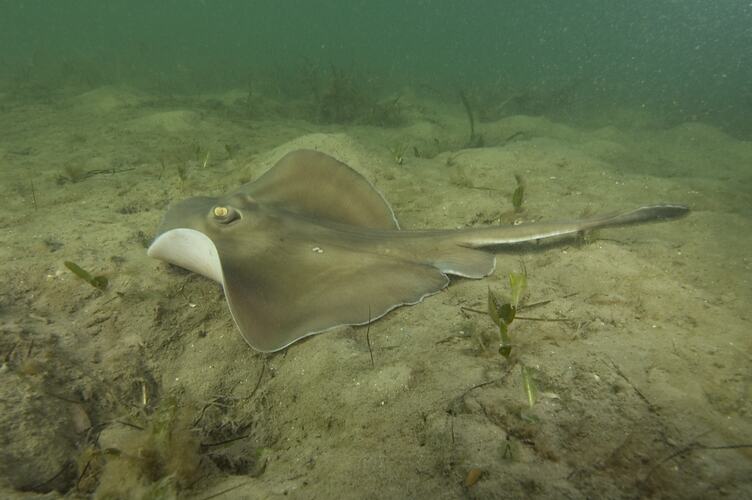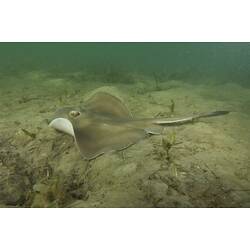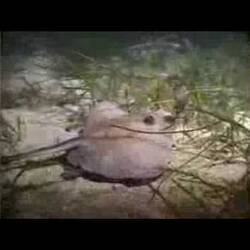General Description
Disc flattened, almost circular, tail slender, tapering, with a prominent serrated spine, a long leaf shaped tail fin; dorsal fin absent. Pale grey above usually with one to four regularly arranged dark edged white spots, a concave bar between the eyes and a whitish underside. Usually 30 cm long head to tail tip (up to 38 cm).
Biology
The Sparsely-spotted Stingaree is widely distributed and abundant on sandy bottoms and in seagrass beds in southern Australia, and often rests partly buried in the sandy bottom. Stingarees must handled with great care as the serrated spine is venomous and can inflict a very painful wound. When wading in sandy shallows and seagrass areas it is advisable to shuffle along to avoid accidentally stepping on one of these rays.
Distribution
Southern Australia.
Habitat
Sandy bottoms of coastal waters and bays.
More Information
-
Animal Type
-
Animal SubType
-
Brief Id
Disc almost circular, tail with a venomous spine and a caudal fin, greyish to pale brown with several dark-edged pale spots.
-
Habitats
-
Diet
Carnivore
-
Diet Categories
Invertebrates
-
Hazards
Venomous spines.
-
Endemicity
-
Commercial
Yes
-
Conservation Statuses
CITES: Not listed, FFG Threatened List: Not listed, DSE Advisory List: Not listed, IUCN Red List: Least Concern
-
Depths
Deep ( > 30 m)
-
Water Column Locations
On or near seafloor
-
Taxon Name
-
Scientific Author
Dixon, 1969
-
Common Name
Sparsely-spotted Stingaree
-
Kingdom
-
Phylum
-
Subphylum
-
Superclass
-
Class
-
Subclass
-
Superorder
-
Order
-
Family
-
Genus
-
Species Name
paucimaculatus



